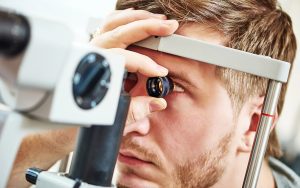Does Too Much Screen Time Affect Your Eyesight? Uncovering the Impact

In our digital-dominated world, the topic of screen time and its potential impact on eyesight has become a focal point for eye care professionals. The concerns regarding excessive screen time are backed by an array of studies, prompting eye doctors to examine the relationship between staring at a screen and various vision problems. As we delve deeper into the effects of prolonged digital device use, it becomes imperative to understand the intricacies of how screen time can impact our eye health.
The Onset of Digital Eye Strain
Digital eye strain, also known as computer vision syndrome, encompasses a range of ocular and vision-related issues that result from prolonged use of digital screens. Symptoms of digital eye strain can include blurry vision, dry eye, and even double vision in severe cases. When we stare at screens, we tend to blink less—up to 60% less than normal, according to the National Eye Institute—which can lead to dry eye disease. This reduction in blinking disrupts the eye’s ability to be replenished with a fresh layer of tear film, resulting in eyes that feel dry and tired.
The Myopia Connection: A Closer Look
A worrying trend is the rise in rates of myopia, or nearsightedness, particularly in children. Research suggests that children who spend more time indoors and engage in close-up vision activities, like looking at a screen, can experience myopia progression. Myopia development is more than an inconvenience; it can be a gateway to more serious eye problems later in life. The World Health Organization has highlighted the importance of limiting screen time for kids, noting that increased screen time is associated with a higher risk of myopia.
Guarding Against Vision Deterioration
When it comes to eye health, taking preventative measures to protect against eye strain is key. One such measure is the 20-20-20 rule, which suggests that for every 20 minutes spent looking at a screen, a person should look at something 20 feet away for at least 20 seconds. This simple exercise can give your eyes a much-needed break and help to reduce eye strain. Additionally, ensuring that children spend time outdoors is vital, as natural daylight is important for maintaining good vision and may help prevent the progression of myopia.
Screen Time Recommendations and Eye Exams
The question of “How much screen time should I allow?” is frequently asked by concerned individuals. While the World Health Organization recommends no more than 1 hour of recreational screen time for children under 5, the guidelines are less clear for older children and adults. However, one thing is certain—regular breaks from the screen can benefit eyesight. Eye associates recommend taking time away from your computer and spending more time outside to give your eyes a rest and slow myopia development.
Furthermore, having regular eye exams is essential, as an eye doctor can detect early symptoms of digital eye strain or myopia and provide guidance on reducing screen time. For those already experiencing vision issues, wearing glasses specifically designed to reduce glare and filter out blue light can help alleviate symptoms and protect your eyes from the strain caused by digital screens.
Balancing Screen Use for Long-Term Eye Health
It’s not just children’s eyes that are at risk; adults spend countless hours in front of a screen each day, and they, too, need to be mindful of the time spent on digital devices. Taking proactive steps, such as reducing screen time, using proper lighting, and implementing ergonomic solutions can all play a part in maintaining eye health. Recreational screen time can have a significant impact on long-term eye health, and limiting your screen time can be a smart move to ensure the sustainability of your eyesight.
In Conclusion
While our society continues to embrace technology in all aspects of life, we must remain cognizant of the implications that come with increased screen time, especially when it comes to our vision. Eye fatigue, myopia, and other eye discomforts are prevalent in today’s age and are exacerbated by the time we spend with screens. The challenge is to find a balance, where we can benefit from the marvels of modern technology without compromising our vision and eye health. By taking regular breaks, limiting screen time, and ensuring we give our eyes the care they need, we can protect our eyes and potentially mitigate the effects of our screen-laden lifestyle.




